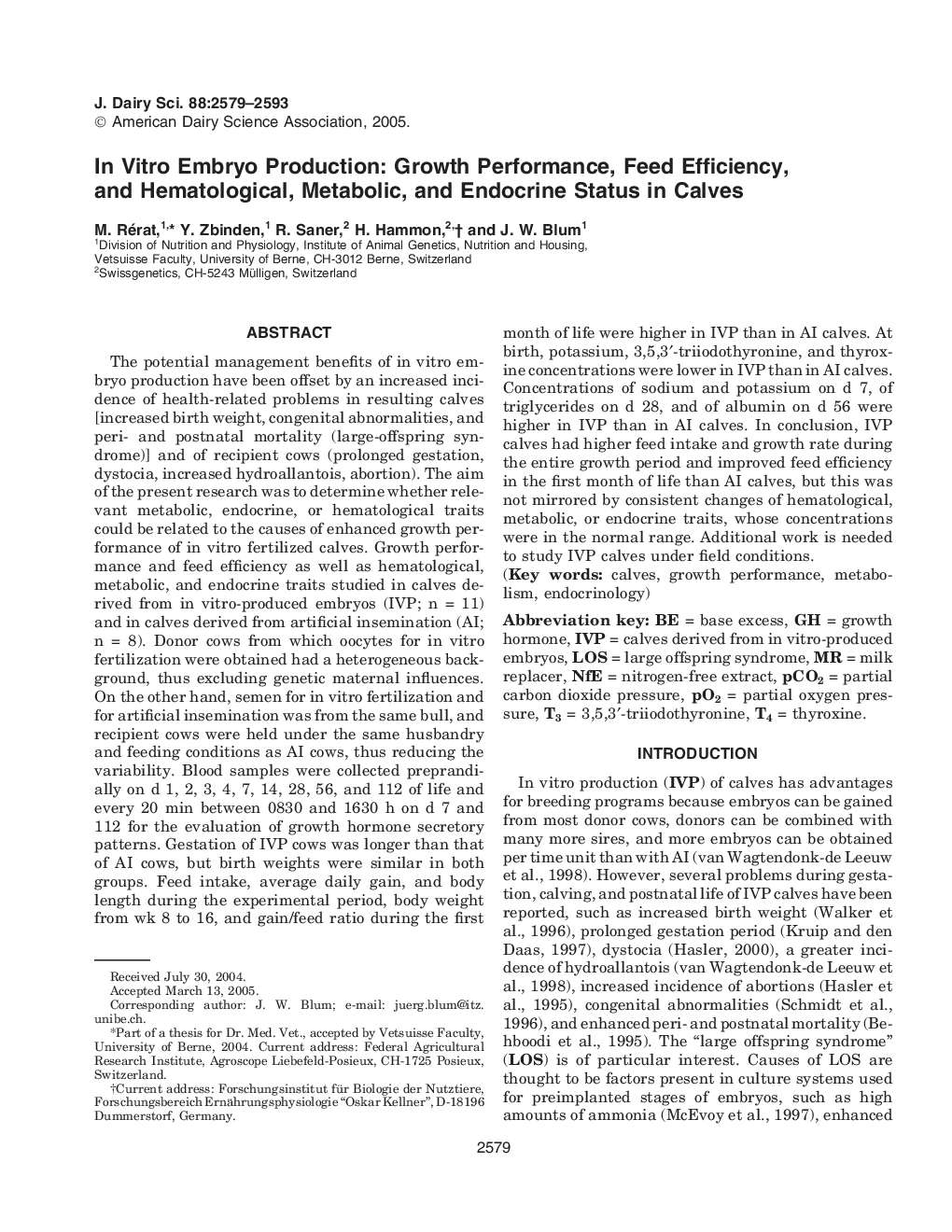| Article ID | Journal | Published Year | Pages | File Type |
|---|---|---|---|---|
| 2442051 | Journal of Dairy Science | 2005 | 15 Pages |
Abstract
The potential management benefits of in vitro embryo production have been offset by an increased incidence of health-related problems in resulting calves [increased birth weight, congenital abnormalities, and peri- and postnatal mortality (large-offspring syndrome)] and of recipient cows (prolonged gestation, dystocia, increased hydroallantois, abortion). The aim of the present research was to determine whether relevant metabolic, endocrine, or hematological traits could be related to the causes of enhanced growth performance of in vitro fertilized calves. Growth performance and feed efficiency as well as hematological, metabolic, and endocrine traits studied in calves derived from in vitro-produced embryos (IVP; n = 11) and in calves derived from artificial insemination (AI; n = 8). Donor cows from which oocytes for in vitro fertilization were obtained had a heterogeneous background, thus excluding genetic maternal influences. On the other hand, semen for in vitro fertilization and for artificial insemination was from the same bull, and recipient cows were held under the same husbandry and feeding conditions as AI cows, thus reducing the variability. Blood samples were collected preprandially on d 1, 2, 3, 4, 7, 14, 28, 56, and 112 of life and every 20 min between 0830 and 1630 h on d 7 and 112 for the evaluation of growth hormone secretory patterns. Gestation of IVP cows was longer than that of AI cows, but birth weights were similar in both groups. Feed intake, average daily gain, and body length during the experimental period, body weight from wk 8 to 16, and gain/feed ratio during the first month of life were higher in IVP than in AI calves. At birth, potassium, 3,5,3â²-triiodothyronine, and thyroxine concentrations were lower in IVP than in AI calves. Concentrations of sodium and potassium on d 7, of triglycerides on d 28, and of albumin on d 56 were higher in IVP than in AI calves. In conclusion, IVP calves had higher feed intake and growth rate during the entire growth period and improved feed efficiency in the first month of life than AI calves, but this was not mirrored by consistent changes of hematological, metabolic, or endocrine traits, whose concentrations were in the normal range. Additional work is needed to study IVP calves under field conditions.
Keywords
Related Topics
Life Sciences
Agricultural and Biological Sciences
Animal Science and Zoology
Authors
M. Rérat, Y. Zbinden, R. Saner, H. Hammon, J.W. Blum,
